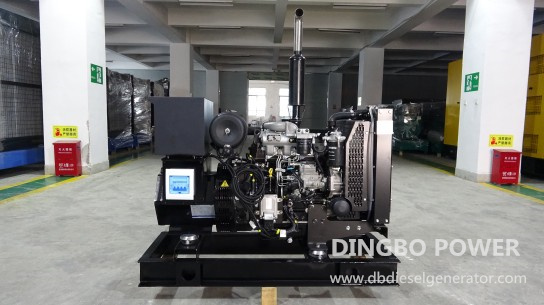Diesel generators are widely used across industries due to their durability and high fuel efficiency. They provide backup power for homes, businesses and industries during outages and other emergencies and can also be used in places without connection to a power grid. There are many types of diesel-powered generators on the market, and each type has its specific use scenarios and advantages. In this article, we will reveal different types of diesel generators and their applications.
First of all, diesel generator sets can be divided into land, marine and trailer and vehicle-mounted generators based on the conditions of use.
Land generators: As the name suggests, this type of generator is used on non ships. They can be used for industrial purposes, commerce or for home. Land-based diesel gensets are not only for emergency power but may also have a secondary function of feeding power to utility grids.

Marine generators: Marine generators are used on boats, ships, bulk carriers, cruise ships, engineering ships, yachts, etc. These generators are designed to be as compact as possible to allow for maximum space within the vessel and built to resist corrosion and other moisture issues associated with being out at sea. Generators built for land are not suitable for working in the ocean.
Trailer and vehicle-mounted generators: These generators are simple, compact and easy to transport and move, suitable for temporary or mobile power needs. They are applied to industrial truck, van, trailer or other mobile vehicle applications for the purpose of providing on-board power.
Secondly, according to the appearance structure, diesel generators can be divided into open type and closed type.
Open type generators: Open-type generators have a steel base frame design with or without a base frame fuel tank depending on the requirements. This type of diesel generator has the stator windings exposed, without any external protection, which is typically installed in a dedicated room or outdoor area. They are usually used for conditions that do not require low noise levels, such as in industry (factories) or construction.
Closed type generators: This type of genset is distinguished by its enclosed structure, providing enhanced durability and sound attenuation. Closed type generators feature an integrated enclosure or canopy that surrounds the engine and alternator, which can reduce noise and protects the generator from rain, dust, and other environmental factors. They are suitable for residential areas, hospitals, and urban environments with strict noise regulations.
Thirdly, diesel generator sets can be classified in continuous power, prime power, or standby power depending on their mode of operation.
Continuous power generators: These generator sets are designed to operate continually with a consistent load and primarily used in remote locations such as mining and oil and gas operations, construction, ships, etc., where there is no access to the grid to supply electric power.
Prime power generators: Similar to continuous power generators, prime power generators can also operate continuously or for extended periods of time. They are designed to operate for long durations at variable load and often used as a main source of power when there is no utility source available. These generators are primarily used for industrial applications like mining and construction sites and in remote areas where access to the grid is not available.
Standby power generators: This type of generator is used to supply power only when there is an outage to the utility grid or the main source of power in a backup situation. They are often used in residential, commercial, and critical facilities where brief power interruptions occur.
Finally, based on the type of cooling system, diesel generator sets can be classified in air-cooled and liquid-cooled.
Air-cooled generators: Air-cooled generators make use of air circulation to dissipate heat. Typically, air-cooled engines are used for portable generators and standby generators up to 22 kilowatts. These generators are commonly used for small-scale applications, such as camping, recreational vehicles, and backup power for homes and small businesses.
Liquid-cooled generators: Liquid-cooled generators uses oil or coolant to keep the temperature of the internal parts down. They are typically larger and more powerful than air-cooled generators. These generators are widely used for commercial and industrial purposes where the cooling demand is larger than small residential and portable units.
In addition to the types mentioned above, diesel generators can be divided into other types, such as two-stroke and four-stroke based on number of strokes and manual start and automatic start based on starting mechanism. Read more about: how to classify the types of diesel generator sets.
Are you looking for a disel generator but unsure which is right for you? Contact us today! Dingbo Power has a power generation solution to meet your needs. With almost 20 years of experience, we can give you right advice and offer the best option for you. Feel free to contact us with any questions, concerns, or inquiries to learn more about the products & services we provide.
Comments
Post a Comment